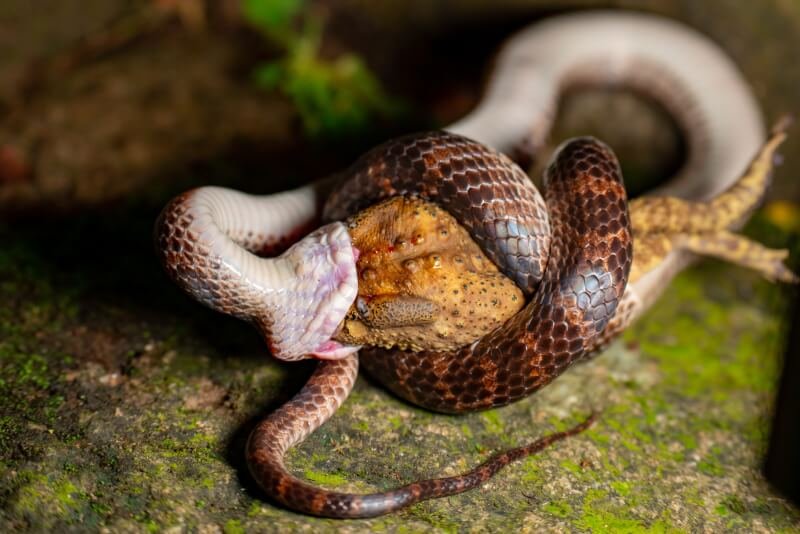Proper ventilation is crucial for maintaining a healthy living environment for your beloved snake. With an enclosed space, it’s essential to ensure adequate air circulation to prevent the build-up of excess humidity, odors, and harmful bacteria. By allowing fresh air to constantly flow through your snake’s enclosure, you can help regulate temperature, reduce the risk of respiratory illnesses, and promote overall well-being. In this article, we will explore practical tips and guidelines to help you create an optimal ventilation system that will keep your snake happy and healthy in its enclosure.
Choosing the right enclosure
When it comes to housing your snake, choosing the right enclosure is crucial for ensuring proper ventilation. Consider the size and material of the enclosure to provide the best living environment for your snake. Select an enclosure that is spacious enough for your snake to move around comfortably but not overly large, as this could make it difficult for them to regulate their body temperature. Additionally, opt for enclosures made of materials that allow for adequate airflow, such as glass or plastic with ventilation holes.
Positioning the enclosure
Once you have chosen the appropriate enclosure, it is important to consider its positioning in your home. Place the enclosure in a well-ventilated area to ensure fresh air can flow through it easily. Avoid placing the enclosure near drafts, as this can cause rapid temperature fluctuations and may lead to respiratory issues for your snake. It is also best to keep the enclosure away from direct sunlight, as this can create overheating problems.
Using appropriate bedding
Bedding plays a significant role in maintaining proper ventilation in your snake’s enclosure. Select bedding that allows for airflow, such as aspen shavings or coconut fiber substrates. Avoid using bedding that retains excess moisture, such as cedar chips or newspaper, as this can create a damp and humid environment that is unfavorable for your snake’s health. Proper bedding not only assists with airflow but also helps in managing humidity levels within the enclosure.
Maintaining proper humidity levels
Humidity levels are crucial for the overall well-being of your snake, and it is essential to monitor and adjust them regularly. Different snake species have specific humidity requirements, so it is important to research and understand the needs of your particular snake to ensure you are providing the ideal environment. Using a hygrometer to measure humidity levels in the enclosure can be helpful. If the humidity is too high, you can use a dehumidifier or increase ventilation to lower it. Conversely, if the humidity is too low, you can use a humidifier or mist the enclosure to increase moisture levels.

Investing in an effective heat source
Snakes are ectothermic creatures, meaning they rely on external heat sources to regulate their body temperature. Choosing an appropriate heat source is crucial for maintaining the ideal temperature gradient within the enclosure. It is important to select a heat source that doesn’t hinder ventilation. Heat pads or heat tape placed under the enclosure can provide a consistent heat source without blocking airflow. Ensure that the heat source is positioned in a way that allows your snake to move closer or further away to achieve the desired warmth.
Avoiding overcrowding
Providing enough space for your snake is essential for their overall well-being and proper ventilation. Ensure that the enclosure is appropriately sized for your snake’s species and growth potential. Avoid housing multiple snakes in a small enclosure, as this can lead to overcrowding and restricted airflow. Each snake should have enough space to move, hide, and stretch out comfortably within the enclosure.
Cleaning the enclosure regularly
Regular cleaning and maintenance of the enclosure are crucial for maintaining proper ventilation. Remove waste and soiled substrate promptly to prevent the buildup of ammonia and unpleasant odors. Clean and disinfect the enclosure periodically to eliminate any bacteria or parasites that could negatively impact your snake’s health. Ensure you use reptile-safe cleaning products and thoroughly rinse the enclosure to prevent any residual chemicals from affecting your snake.
Monitoring airflow
Monitoring airflow is vital to ensure that the enclosure is adequately ventilated. Check for any obstructions in the ventilation system, such as dust or debris that may accumulate over time. Clean or replace filters regularly to ensure optimal airflow within the enclosure. It is also important to ensure that vents and ventilation holes are not covered or blocked by decorations, substrate, or other objects.

Reducing moisture buildup
Moisture buildup within the enclosure can lead to respiratory issues and other health problems for your snake. To reduce moisture buildup, allow sufficient time for the substrate to dry out between misting or watering sessions. Avoid excessive misting or spraying, as this can create a chronically damp environment. It is important to find a balance between providing adequate humidity and preventing excessive moisture buildup.
Seeking professional advice
If you have any concerns or questions about properly ventilating your snake’s enclosure, it is always advisable to seek professional advice. Consult a veterinarian or reptile expert who can provide guidance specific to your snake’s species and individual needs. They can assess your setup, offer recommendations, and ensure that you are providing the best ventilation possible. Following their advice and expertise will help ensure a healthy and comfortable living environment for your snake.
In conclusion, ensuring proper ventilation in your snake’s enclosure is vital for their overall health and well-being. By considering the size and material of the enclosure, positioning it correctly, using appropriate bedding, maintaining proper humidity levels, investing in an effective heat source, avoiding overcrowding, cleaning regularly, monitoring airflow, reducing moisture buildup, and seeking professional advice when needed, you can create an optimal living environment for your snake. Prioritizing proper ventilation will not only help prevent respiratory issues and other health problems, but it will also contribute to your snake’s overall happiness and quality of life.



